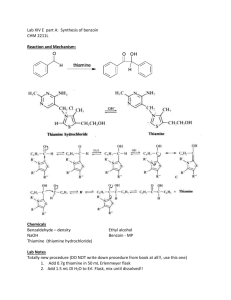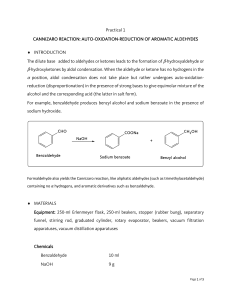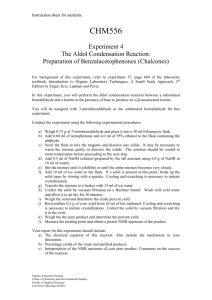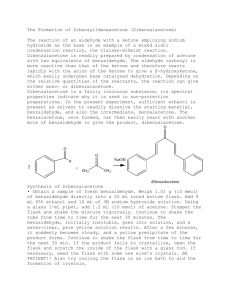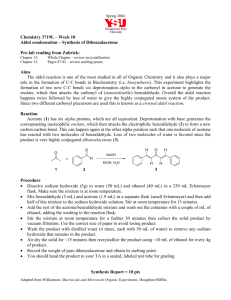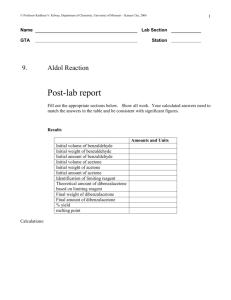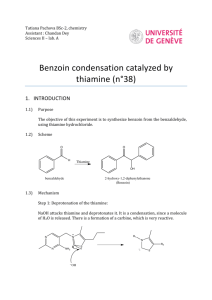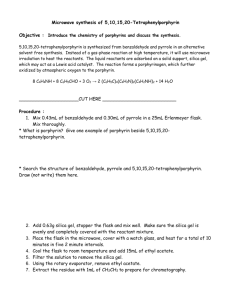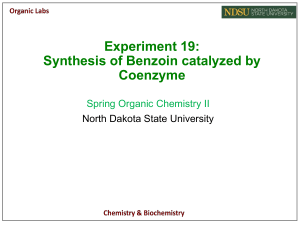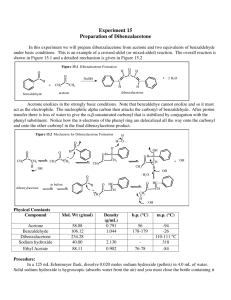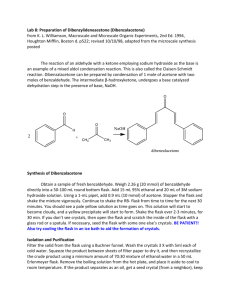Benzoin Synthesis Notes and Post
advertisement
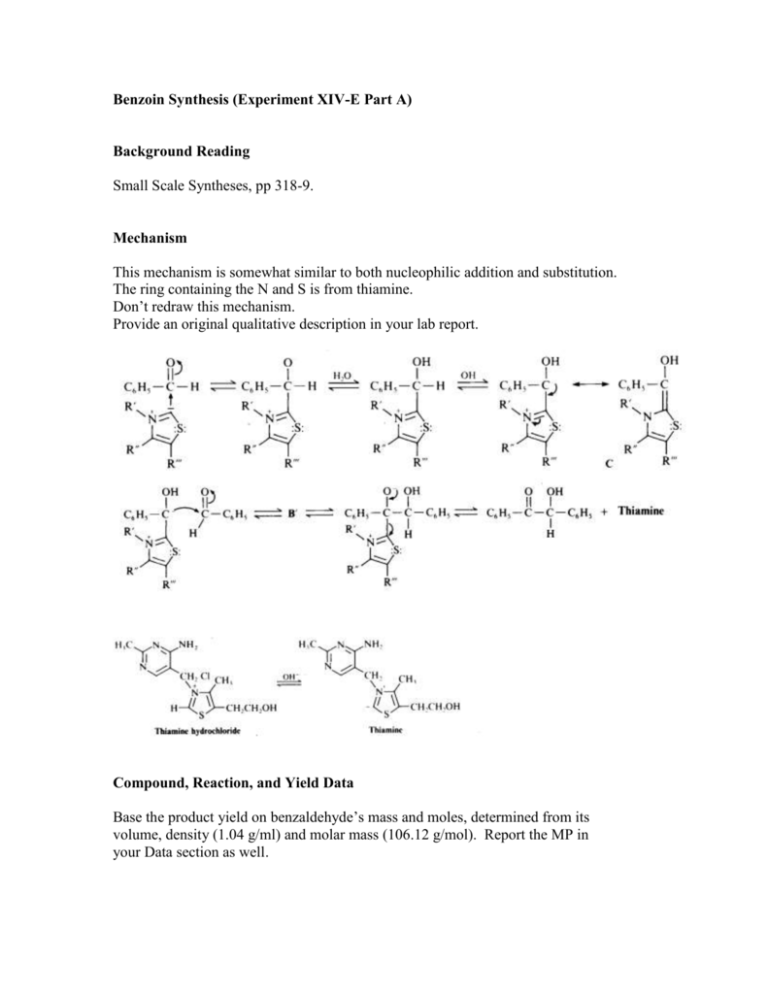
Benzoin Synthesis (Experiment XIV-E Part A) Background Reading Small Scale Syntheses, pp 318-9. Mechanism This mechanism is somewhat similar to both nucleophilic addition and substitution. The ring containing the N and S is from thiamine. Don’t redraw this mechanism. Provide an original qualitative description in your lab report. Compound, Reaction, and Yield Data Base the product yield on benzaldehyde’s mass and moles, determined from its volume, density (1.04 g/ml) and molar mass (106.12 g/mol). Report the MP in your Data section as well. Procedure 1. Add 0.7 g of thiamine hydrochloride and 2.0 ml of water, to a 25-ml round-bottom flask. Mix until thiamine is completely dissolved before proceeding to step 2. 2. Add 7.0 ml of 95 % ethanol and 3.8 ml of 2.0 M NaOH to the flask. Add the base solution slowly and dropwise. Allow to sit for 5 minutes. The bright yellow color will generally fade to pale yellow during this time. 3. Add 4.0 ml of benzaldehyde to the flask. Caution – Benzaldehyde is toxic and is an irritant to skin, eyes, and lungs. Use gloves and avoid all contact with skin, eyes, and nose. 4. Reflux for 90 min in a 65 oC water bath. 5. Cool in an ice-water bath, while stirring with a stir bar on a stir plate, to form the product crystals. Stirring is necessary in order to prevent the product from “oiling out”, which is the formation of an insoluble liquid phase (Small Scale Synthesis, pg 26, C2). Also, add 5.0 ml of cold (< 10 oC) distilled water to further minimize oiling out. 6. Weigh a piece of 55-mm filter paper. Then, collect the solid product by vacuum filtration using a Büchner funnel and a vacuum flask. Wash the product with 10 ml of cold distilled H2O. 7. Dry in oven at 110 oC for 30 minutes. Then, obtain the product mass and melting point. Label your product with your names and put it in a tray in hood. Post-Lab Questions 1. Two benzaldehyde molecules can disproportionate into benzoic acid and benzyl alcohol. Write the net chemical equation. What must be present for this to happen? How can benzaldehyde be stored to prevent the disproportionation? 2. What solid side-product could form in steps 2 through 4 (during refluxing) if benzoic acid is present? 3. What effect does the reflux in step 4 have on the reaction? Why? 4. What structurally prevents benzaldehyde from forming an enol or enolate? 5. Why is thiamine biologically important?
